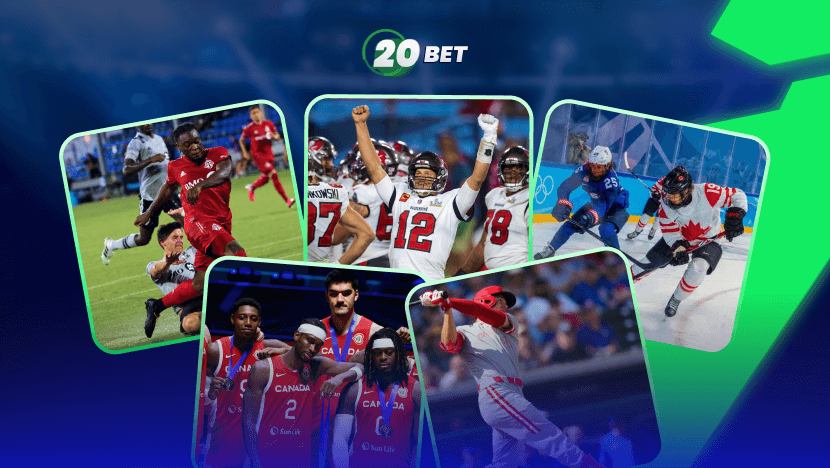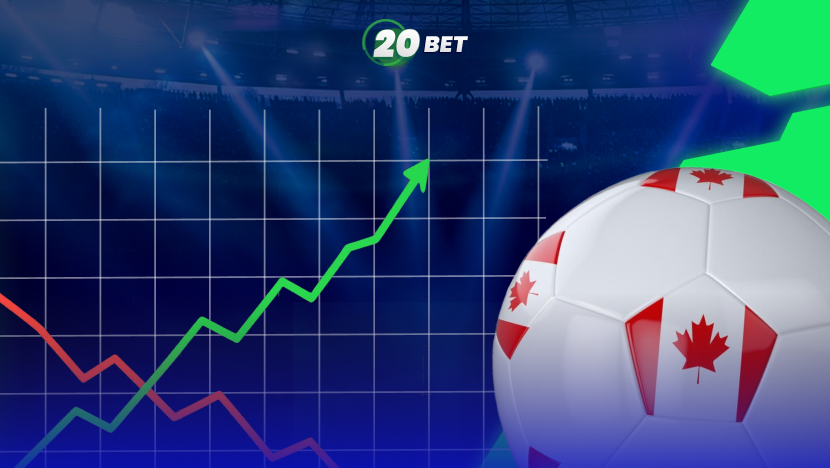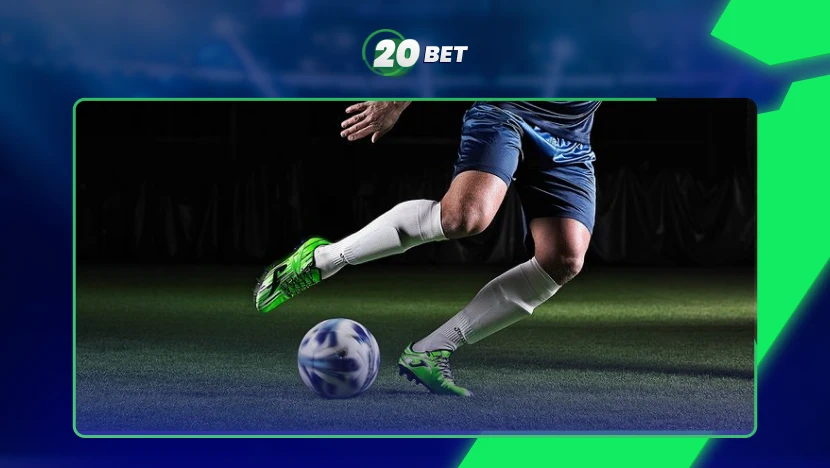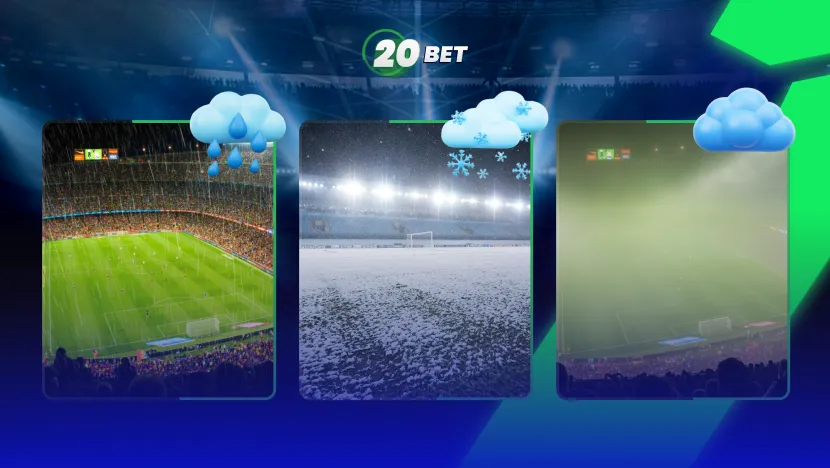If you love the idea of turning coffee money into a headline slip, parlays are your playground. However, when prices multiply, so do the swings, which can significantly impact your bankroll. This guide breaks it down — how to parlay, how the math actually moves your balance, and whether parlays are worth it.
What Is a Parlay Bet?
A parlay bet combines multiple individual wagers (legs) into a single ticket. Every leg has to win or the slip dies. You can mix moneylines, spreads, totals, and props across games or, where rules allow, within the same game.
At 20Bet, it’s quite straightforward: add your picks, view the combined price, choose a stake, and confirm.
The Allure: High Payouts From Small Wagers
Parlays create leverage by multiplying odds, so a small bet can return much more than any single leg — at the cost of a lower hit rate and sharper swings.
For example, a two-leg parlay at 1.90 × 1.90 pays 3.61. So, if you bet $10, your return will be $36.10 (profit $26.10). Meanwhile, a three-leg parlay at 1.85 × 1.85 × 1.85 pays ≈ 6.33. If you bet $10, your return will be about $63.32 (profit $53.32).
That’s the draw: bigger potential payouts than singles but with a much lower chance of cashing.
How Parlay Odds and Payouts Work
Calculating Parlay Odds (Multiplying Decimal Odds)
To find a parlay’s combined price in decimal odds, multiply the odds of all legs together, then multiply that result by your stake to get the total return. Your profit is simply the return minus your stake.
- Parlay Return = Stake × (Product of all legs’ decimal odds)
- Parlay Profit = Parlay Return − Stake
Example (three legs, NHL + NBA same day):
If your legs are 1.86, 1.92, and 1.75, multiplying them gives a combined price of 6.25 (1.86 × 1.92 × 1.75 = 6.2496, which rounds to 6.25). With a $20 stake, your return would be $124.99 (often shown as $125.00 after rounding), and your profit would be about $105 ($125 − $20).
Example (two legs):
Two selections at 1.95 each multiply to 3.80 (1.95 × 1.95 = 3.8025, typically shown as 3.80). With a $25 stake, your return would be $95.06, and your profit would be $70.06 ($95.06 − $25.00).
For American odds: First convert each leg to decimal odds.
- If American odds are positive (+A): Decimal = (A / 100) + 1
- If American odds are negative (−A): Decimal = (100 / A) + 1 (where A is the absolute value of the negative odds)
For example:
- (+150): Decimal = (150 / 100) + 1 = 2.50
- (−120): Decimal = (100 / 120) + 1 ≈ 1.83
After converting each leg to decimal, multiply the decimals to get the parlay price, then multiply by your stake for the total return (profit = return − stake).
Typical Payout Examples vs. True Odds
Sportsbooks build a margin into each leg. When those legs are combined in a parlay, the margin compounds — so even tiny gaps between fair odds and the offered odds add up fast.
Why it matters:
- If fair odds are 2.00 but you take 1.91, a single $10 win returns $19.10 (profit $9.10) instead of $20 (profit $10).
- In a two-leg parlay, the fair odds would be 2.00 × 2.00 = 4.00 ($10 → $40, profit $30). Taking 1.91 × 1.91 = 3.65 pays $36.50 (profit $26.50).
- That $3.50 lower return is the margin getting multiplied, which is why settling for worse odds steadily drags down your average outcome over time.
Practical tip: Keep a simple sheet with fair vs. offered columns for each leg so you can see at a glance how much value you’re giving up (or gaining) once those differences are multiplied.
Hidden Risks of Parlay Betting
Parlays aren’t “bad” — they’re just unforgiving. One weak link kills the ticket, and emotion can push poor staking decisions.
For instance, in Canada, parlays used to be the only legal option in many provinces. Then in 2021, single-game betting was legalized, reflecting a simple truth: as you add legs, the overall win probability collapses quickly.
Low Probability of Success: One Losing Leg Sinks the Bet
Win probability decreases exponentially with additional selections. Three legs with 60% individual win probability combine for only 21.6% success rate (0.6 × 0.6 × 0.6 = 21.6%). Five at 60% sink to 7.78%.
Over time, regression pulls hot streaks back to the math. Log your results and run a simple simulation (say, 1,000 trials) to see how long cold spells last before you size up.
High House Edge and Hold Rate on Parlays
Since each leg includes margins, the blended hold on parlays is higher than on singles. This mathematical advantage explains why operators actively promote parlays through bonuses and advertising.
To counter this, focus on optimization — price shopping, limiting the number of legs, and avoiding correlated picks unless odds adequately compensate for the reduced probability.
Illusion of Value Leading Bettors Astray
Tilt is the emotional slide after a win or loss where discipline drops and you start making impulsive decisions (chasing, over-staking, or adding risk you wouldn’t normally take) because the big potential payout is stuck in your head. After a near miss, it often shows up as “add one more leg” or “double the stake.”
To stay in control, set simple rules you follow every time: limit the number of legs, cap your stake size (e.g., ≤0.5% of bankroll), and pre-commit to skip any leg priced worse than your fair line.
Secret Rewards and Rare Wins
Used carefully, parlays can give you measured exposure to rare, big-win upside and the occasional bankroll boost. However, the distribution is lopsided: many small losses punctuated by infrequent, outsized wins that can dominate a season’s results.
Massive Payouts From Long-Shot Parlays
Every so often, long tickets land and can fund months of play. That’s the appeal you see in highlight reels of the biggest parlay wins — rare, but possible.
For example, in November 2021, a BetMGM customer in Virginia turned a $50, 15-leg multi-sport parlay into about $1.1 million over six days, a headline win that shows the scale.
Stories of Near-Misses and Hedged Wins
In June 2025, a £10 (≈$13,35) season-long six-fold futures accumulator priced around 3338.6/1 died in stoppage time. The bettor had already landed Liverpool to win the Premier League, Tottenham to win the Europa League, Chelsea to win the Europa Conference League, Doncaster to finish in the top three of League Two, and Birmingham to win League One. The final leg needed Burnley to win the Championship — and they were set to do it — until Leeds’ Manor Solomon scored in the 91st minute on the final day, flipping the title and killing a payout of a shade over £33,000 (≈$44,000).
That kind of knife-edge finish is exactly why some bettors plan a hedge when a slip is down to one live outcome. In practice, you can back the opposite side (or a rival futures outcome/lay on an exchange) to lock in a guaranteed result. You’ll cap the upside, but you’ll smooth the risk. Decide your rule before you bet (e.g., “hedge when potential return ≥ 20 units” or when a market offers ≤-5% hit to expected value), and stick to it.
Platform Differences: Traditional Sportsbooks vs. Peer-to-Peer
The platform where you bet affects price, execution, and limits. Traditional books offer immediate bet placement and promotional bonuses, while P2P (peer-to-peer) exchanges can deliver sharper prices when orders match. Pick the venue that fits your edge and your patience
- Sportsbook: when you want instant placement, regular boosts and promos, and the widest menu of markets.
- P2P exchange: when you want tighter prices through peer matching and don’t mind orders filling at variable speeds, especially when the commission is lower than a book’s built-in margin and your bets actually get matched.
House-Controlled Odds and Built-in Vig (Traditional Sportsbooks)
Sportsbooks set the lines, manage margins and correlation risk, cap limits, and put in place measures to prevent arbitrage betting. You get instant placement, broad menus, and boosts, but you pay the overround. Industry reports also note why operators push parlays: the hold is higher than on singles.
Peer-to-Peer Models Reducing House Edge and Offering Better Value
P2P exchanges often replace the bookmaker’s built-in margin with a simple fee, which can improve your average returns if your bets get matched. However, there are downsides, such as lower liquidity, wider spreads, and slower fills. Also watch for price slippage — the odds you actually get may differ from what you aimed for, wiping out any advantage.
Variations: Same-Game and Progressive Parlays
Same-game parlays (SGP) link outcomes that may be related; books price that correlation, which raises volatility and can reduce value.
Progressive parlays trade a lower top payout for partial returns when one or two legs miss — check the payout table carefully.
In both cases, keep legs few, confirm what’s allowed, and scale only after you’ve reviewed the operator’s specifics.
What Are Same-Game Parlays and Why They’re Risky
Same-game parlays link correlated outcomes in one contest. Books price the correlation, so your volatility rises while value often falls. If you stack multiple SGPs into a same-day parlay, keep the legs to a minimum and only place it when the odds are genuinely in your favor — no “hope bets.” More legs mean lower hit rates.
Progressive Parlays: Allowing Some Losses for Partial Payouts
A progressive parlay pays reduced returns if one or two legs lose. You’re trading top-end payout for a higher cash rate. Check tables and rules and compare expected value versus standard parlays.
Responsible Gambling
Set simple rules before you bet. Keep parlays small, structured, and easy to track so swings don’t drain your bankroll.
- Cap your stake per parlay (about 0.25–0.5% of bankroll).
- Limit legs (2–4) and avoid adding “just one more.”
- Use deposit and time limits, and step away when tilt shows up.
- Log every ticket to keep discipline and spot leaks fast.
If you’re coming back after a break, reset expectations on hit rates and swings with a quick refresher.
FAQ
What are the chances of winning a parlay bet?








